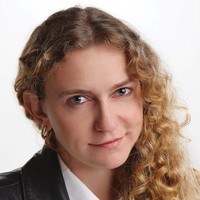Kabalistic Secret of a Jewish Prayer
This last weekend I was honored to be a keynote speaker for the 6th Annual Pagan Conference at the Claremont Graduate University. People and presenters came from all over the world. The topic of the conference was “Sustainability.” Rather than focus on the sustainability of our environment, the paper I delivered focused on the sustainability of Paganism as a vital and evolving set of paths.
For a scholarly crowd, my paper had the appropriate title: “The Similarity and Growth of Neopaganism and Early Judaism, and How that Indicates a Sustainable Neopagan Spirituality for the 21st Century.” Honestly, it was a lot more interesting than the title might sound.
The basic thrust of my paper is that there was a type of “inverted similarities” between the growth of early Judaism (from many deities to one, along with a culture) and modern Neopagan growth (from a few deities to many, along with a culture). It’s a bit much to explain it all in a sentence, but it is thoroughly explained in the paper I gave. I understand that the entire, two-day conference will be available on video. Contact Kahena through their website at this link.
I would like to share a surprising and controversial point in my paper, one that I don’t think has received wide recognition and that shows how the Kabalah can give an entirely different interpretation of something well know, an interpretation that is valuable and important. The following is from my paper:
The She’ma [the famous Jewish prayer usually described as Jews identifying themselves as monotheists] originally appears in Deuteronomy, Chapter 6, Verse 4. It is usually translated in Jewish Bibles as, “Hear, O Israel: the Lord our God, the Lord is One.” To be blunt, why hasn’t anyone ever asked, “What sort of convoluted grammar is that?” If we wish to “un-convolute” the meaning, we have to look at the original Hebrew and the context, as free as possible of preset beliefs and personal prejudices.
The context of the passage is that Moses is setting up the rules for the various tribes—supposedly previously slaves who left Egypt in the Exodus—to finally come together as one über-tribe, the Hebrews or the Jews. The key, here, following Schauss’ argument [Schauss, Hayyim, Jewish Festivals, The. NY: Schocken, 1996. His argument is that the miracle of Judaism is that the various tribes with different beliefs came together as one and recreated earlier festivals as distinctly Jewish.], is that there is no reason to assume that the tribes previously had the same beliefs or practices. Indeed, if they did have the same beliefs, why bother to set up these religious and practical edicts at all? Further, if they didn’t have the same beliefs and practices, there is no reason to assume that they had the same beliefs about God or gods.
This, then, is Leet’s [Leet, Leonora. Secret Doctrine of the Kabbalah, The. Rochester, VT: Inner Traditions, 1999.] point: the She’ma is not just a statement of religious doctrine, it is a political statement. The story in Deuteronomy is that of the tribes uniting politically and allowing their different deities to merge into and be treated as one God. The tribes become one. The gods become one.
The original Hebrew is clear. There are three clauses to what is now called a prayer: She’ma Yisroel: Tetragrammaton Elohanu, Tetragrammaton echod. The first clause is She’ma Yisroel. “She’ma” means “hear” or “listen” in the form of a command, and “Yisroel,” Israel, is the calling of everyone—all the different tribes—one people: the Jews. The second clause gives the names of two different Gods. The first is the deity known as the Tetragrammaton , the name composed of the Hebrew letters Yud-Heh-Vahv-Heh [frequently called “Yaweh,” although Jews do not actually say the name, replacing it with adonai, “my lord,” or hashem, “the name”]. This is followed by Elohanu. The “-nu” suffix means “our” and the deity is known as Eloah. Scholars refer to the followers of these two deities as the “Yawists” and the “Elohists,” respectively.
Note that this clause contains no grammatical article, no form of the word “the.” In Hebrew this article is indicated by prefixing the letter Heh before a word. Although context can imply the verb “is” in Hebrew grammar, simply placing two names next to each other makes no such implication. That second clause simply cannot be translated as “The Lord our God” or “The Lord [is] our God” as Western ears usually hear it. It is simply two different names. The second name does have a suffix indicating possession, but it is historically treated and interpreted as a name.
In the third clause, Tetragrammaton echod, the word echod is usually translated to mean “one.” However, in ancient Hebrew, there were no vowels. The same letters that form the word echod (Aleph, Chet, Dalet), when pronounced ah-chaid—the same letters, mind you—means, “to unite.” Therefore, this third clause, Tetragrammaton echod, clearly indicates that the two deities represented by the names Tetragrammaton and Elohanu in the second clause, are now united as one deity, the Tetragrammaton. This prayer indicates that the people are united as one people, the Jews, with one unified culture and tradition, and that their deities are now united as one God, the Tetragrammaton.
Now that, in my opinion, is something to really celebrate! The varied tribes with varied deities (my guess is that the Yawists and the Elohists were the largest in size and power) have come together and been unified as one people. The She’ma, therefore, is not merely a celebration of monotheism, but of taking a bunch of petty, fighting, disagreeing people and turning them into one.









